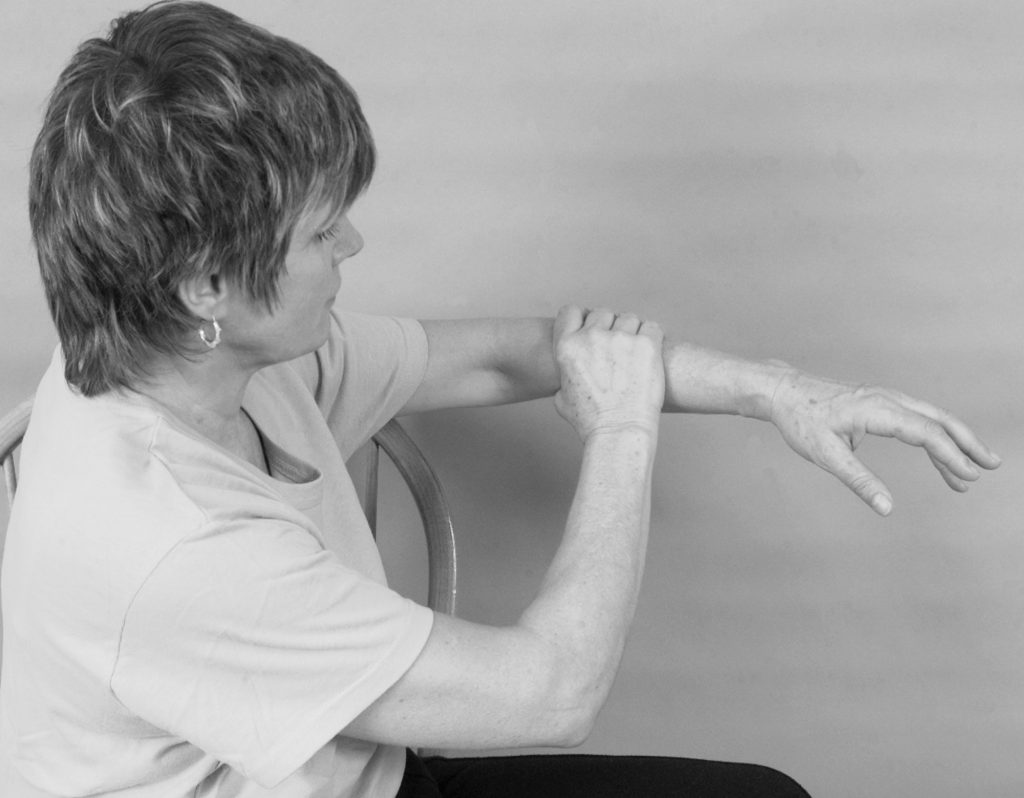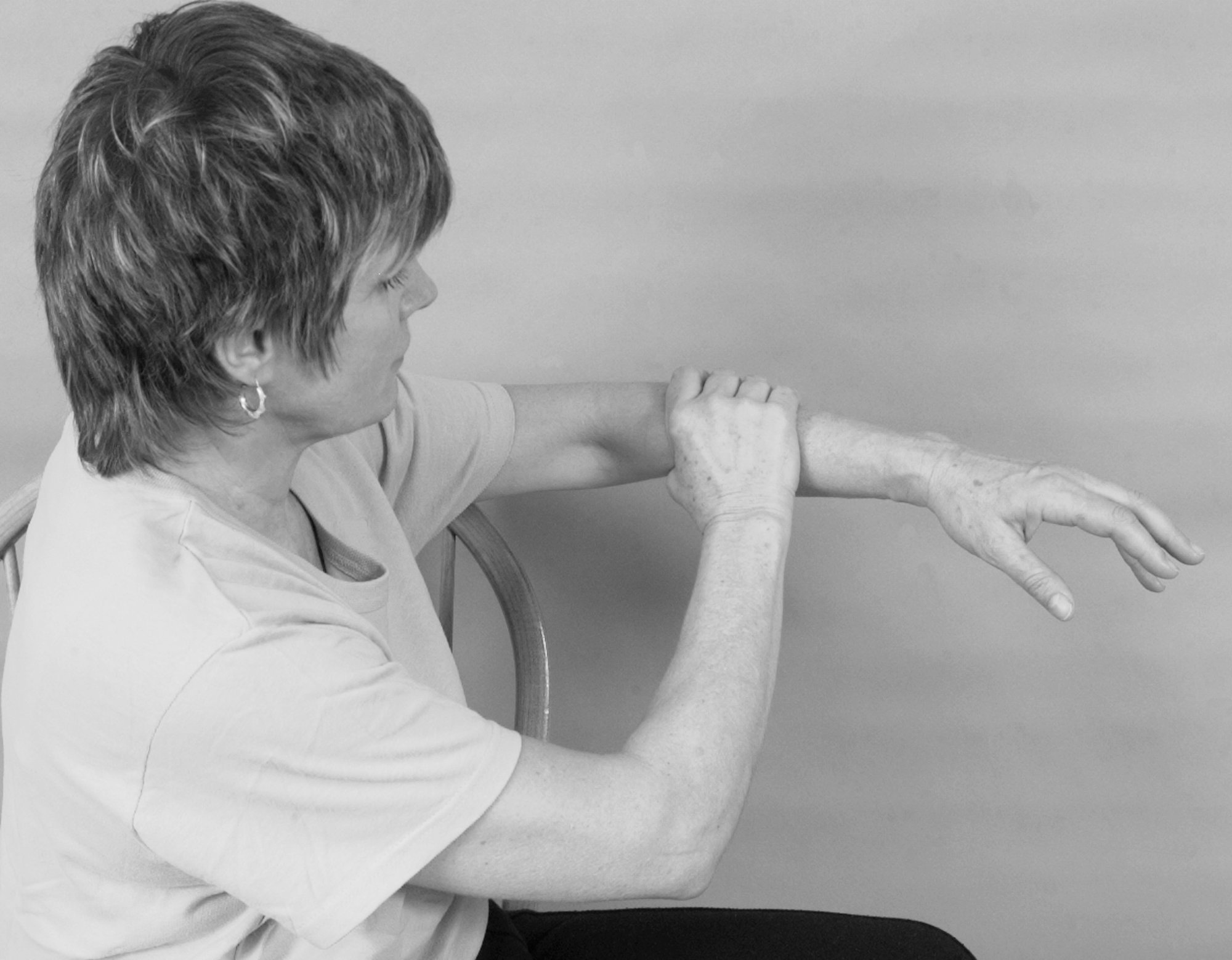Trigger Finger Release – Muscles Need to Be Treated:
Trigger finger release techniques are simple to do when you learn just a few focused points in your forearm. The debilitating effects of trigger finger are caused by the flexor muscles that move your fingers down (so you can tap on the table) and the extensor muscles that move your fingers up (so your fingers aren’t touching the table any more). There are so many people who have this same problem that I wanted to discuss it here on the Stop Pain FAST! blog.
Trigger finger is a repetitive strain injury of your forearm muscles, and when you release the spasms in the fibers your fingers will begin to move easily.

If you grip your forearm tightly (as shown) and then make a fist, then move it up and down, and then open your hand, you’ll feel the muscles contracting. When one of those muscles locks due to spasms you can’t make the opposite movement.
For example, when your flexors (the underside of your forearm) contract you grip your fist, but to open your hand your flexors need to totally relax while your extensors (the top part of your forearm) contract. If your flexors won’t relax and lengthen, your fingers stay bent. This can happen with one finger, or all of them.
As your extensors (on the top of your forearm) continue to contract to try to open your hand, and your flexors stay tight, your finger(s) locks and can’t move in either direction. Eventually the muscle (in this case the flexors) lets go enough to allow your finger to “pop” open. That is trigger finger.
If you have trigger finger, there are most likely many spasms in either your flexors (if you can’t open your hand) &/or your extensors (if you can’t grip your hand). In order to release these muscles it’s necessary to find the spasms and then treat each one before you can stretch the fibers.
Common Medical Treatment for Trigger Finger Release:
Too often the standard treatment for trigger finger release is to strengthen the muscles that need to be pulling (in this case, the extensors), but ignore releasing the tension in the muscles that need to be lengthening (in this case, the flexors).
Or, even worse, I’ve heard of people who have had the tendons of their fingers surgically cut to release the curl in their fingers. This means that they can no longer close their hand with strength. Before ever going for such a radical procedure it’s imperative to first look for the muscle spasms and eliminate them from the mix.
The same muscles (and several not mentioned here) that cause trigger finger are also involved in the symptoms of carpal tunnel syndrome.
Non-surgical treatment for trigger finger release:

Think of this analogy: if you pull your hair your scalp will hurt, but you don’t need to massage your head, or take aspirin for the pain, and you certainly don’t need brain surgery! All you need to do is let go of your hair and the pain will stop and you’ll move easily.
This is the same reason the forearm muscles will cause trigger finger!
Click here to read about all of the muscles that cause hand/wrist pain, and to learn how to release the muscles that cause trigger finger.
Wishing you well,
Julie

